Previously, we reported on NVIDIA’s launch of the new generation embedded high-performance product, Jetson Xavier.NVIDIA has released a new “pocket-sized” development kit: This is how Jetson Xavier looks.
Today, let’s take a closer look at the upcoming Jetson Xavier development kit!

The dimensions should be 105mm * 105mm.
Let’s take a look at the specifications:
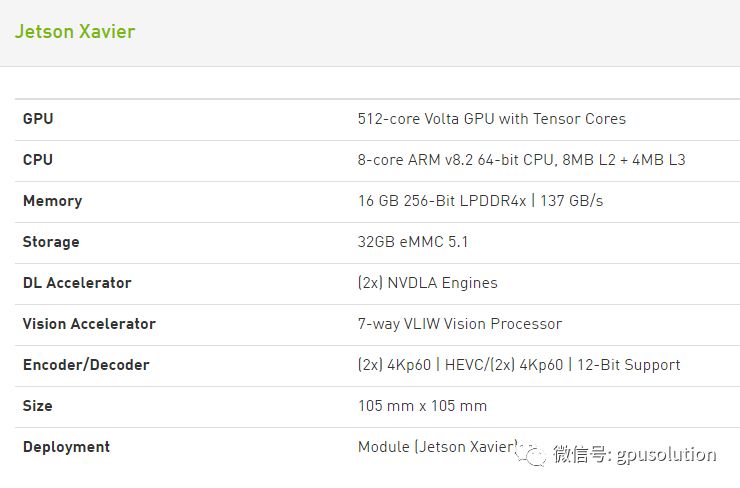
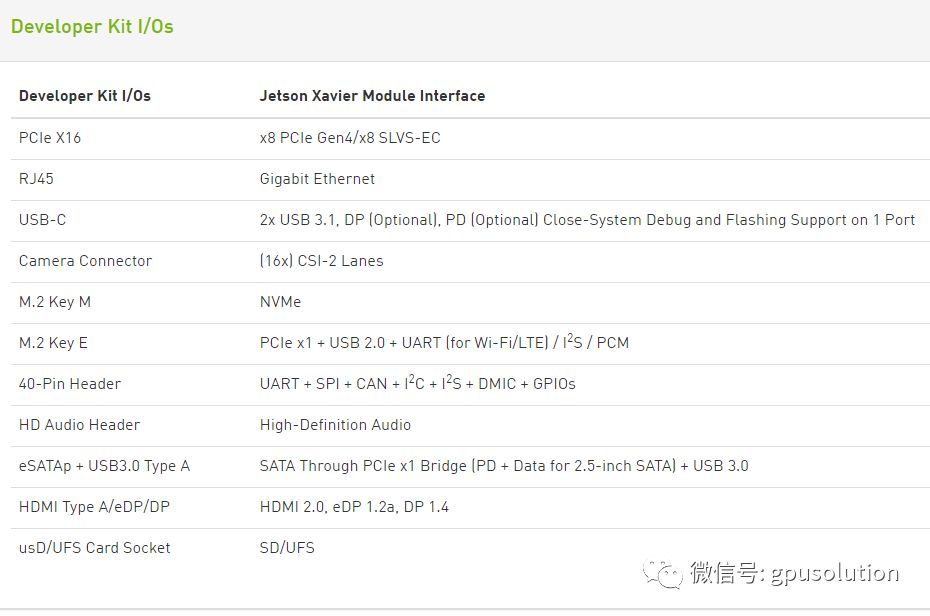
First, let’s take a look at the core board of Xavier:
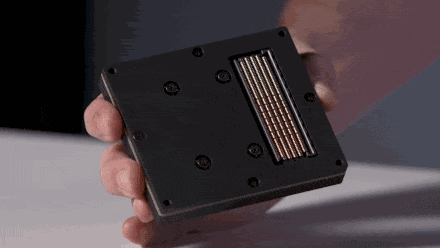
The dimensions are 100mm long, 87mm wide, and 16mm thick (please take note).
It features a 699-pin board-to-board connector that supports all high-speed I/O, including PCIe Gen4. It even ensures compatibility with future components.
The front end of the Xavier development kit:
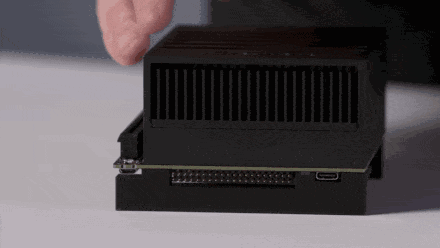
USB ports, GPIO, and a Micro USB port.
Side view:
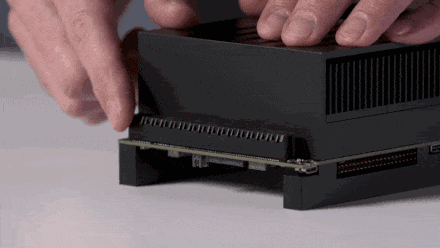
It has a 16 PCIe slot.
Back view:
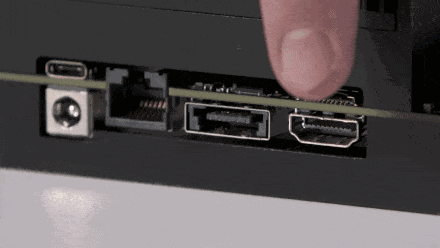
SD card slot, HDMI port, mixed interface (can connect eSATA or USB3.0 type A), Ethernet port, USB port, and power interface.
Other side:
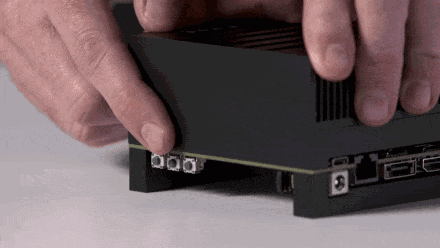
Three power buttons: power button, force recovery button, and reset button.
Bottom view:
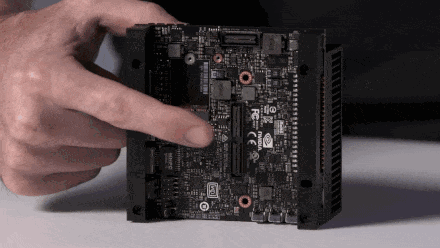
There is a camera interface and an M.2 Key E interface.
Remember, the Xavier development kit does not have onboard WiFi and Bluetooth like the TX2; this M.2 Key E interface allows developers to easily connect WiFi/Bluetooth/Cell.
Some may ask, where is the other M.2 Key M interface? Here it is:

This M.2 Key M interface is used for high-speed NVME storage.
The entire development kit has many innovative design points, among which the design of the heat sink is particularly striking, breaking away from the board shape of the Jetson TK/TX series, and Xavier provides a systematic heat dissipation solution:
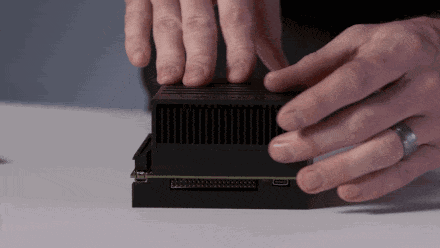
You can even adjust the layout of the development kit according to your solution needs, like this:
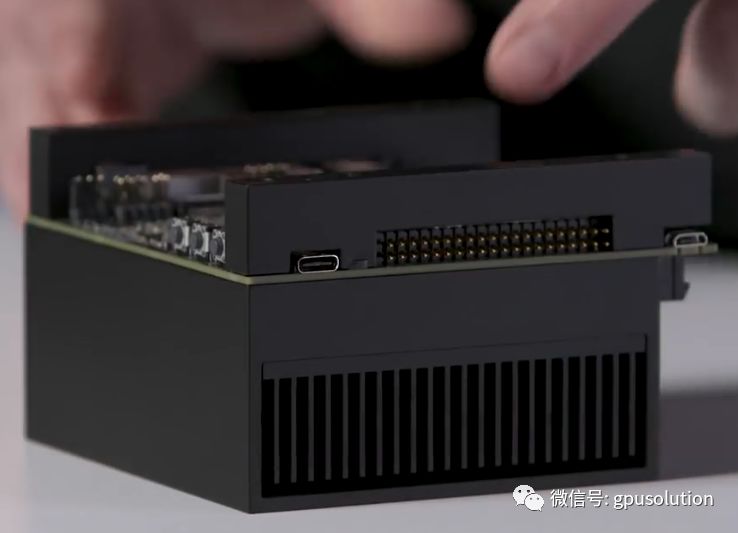
Or like this:
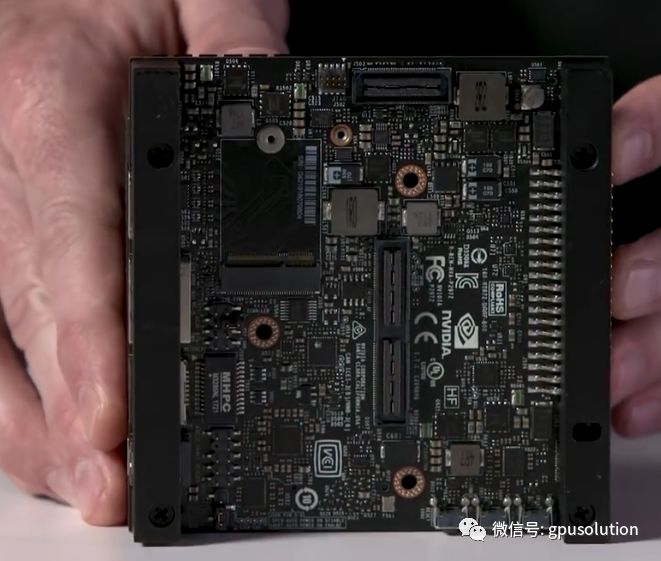
Additionally, this development kit can support up to three displays; how to connect them? Think for yourself!
The Jetson Xavier includes six processors, including 1 Volta Tensor Core GPU, 1 8-core ARM64 CPU, 2 NVDLA deep learning accelerators, 1 image processor, 1 vision processor, and 1 video processor, capable of executing 300 trillion operations per second. To create it, Nvidia spent five years—three years on design and two years on construction, with over 8,000 people involved in the design and development, making it the longest processor project Nvidia has ever undertaken. Its processing power is roughly equivalent to a workstation equipped with a $100,000 GPU, but with only 30 watts of power, making it a highly anticipated product that is sure to become another hit for NV!
